The Australian Bureau of Statistics (ABS) today released the national accounts for the June quarter, which registered 0.8% growth in real GDP over the quarter and a 1.8% rise over the year.
On a per capita basis, real GDP rose by 0.1% over the quarter but was up by just 0.2% over the year.
More importantly for living standards, real national disposable income (NDI) per capita fell by 1.4% over the quarter but was up by 2.3% over the year, thanks to the fall in the terms-of-trade. Moreover, average workers’ incomes fell by 0.2% in the year to June.
According to the ABS, seasonally adjusted GDP growth for the quarter was driven by government spending, net exports, and household consumption spending, which rose on the back of increased borrowings:
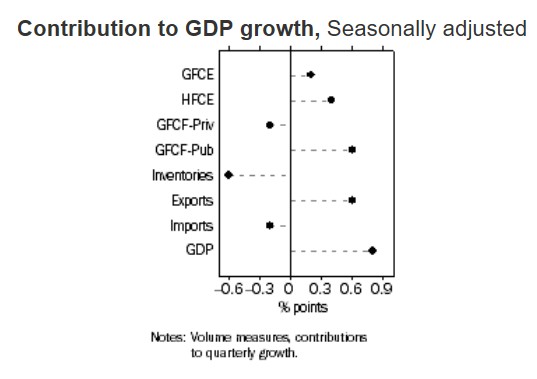
Quarterly final demand, which excludes export volumes, rose by 1.0% over the June quarter, driven largely by the Southern States, with WA, NT and the ACT detracting:
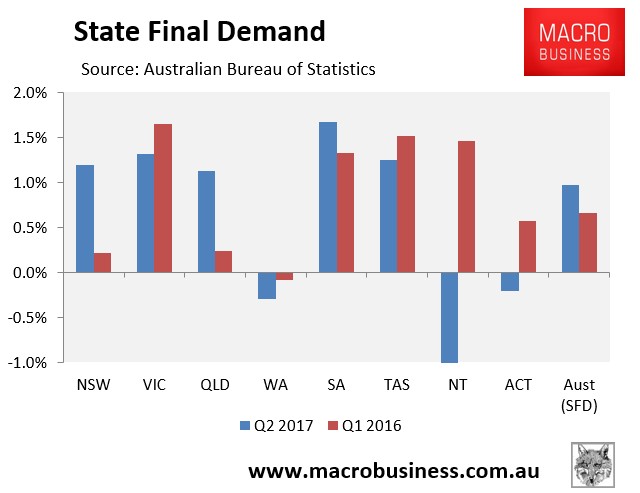
In the year to June 2017, final demand growth was reasonable, growing by 2.4% nationally. VIC, NT and the SA led the way, whereas WA recorded another heavy fall:
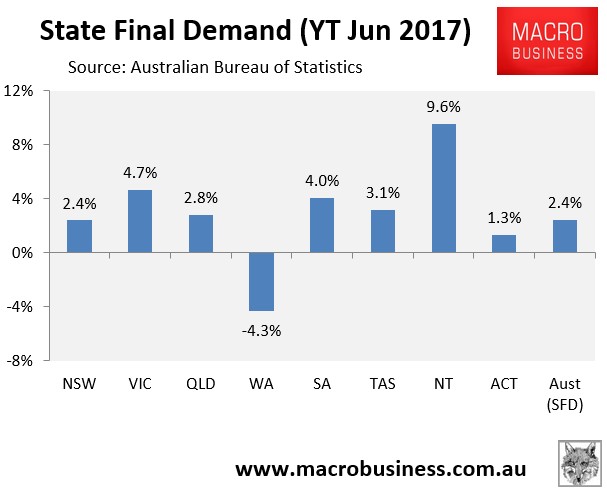
The terms-of-trade fell by a seasonally-adjusted 6.0% over the quarter but rose by 2.0% in trend terms. Over the year it rose by 14.9% in seasonally adjusted terms and by 20.9% in trend terms:
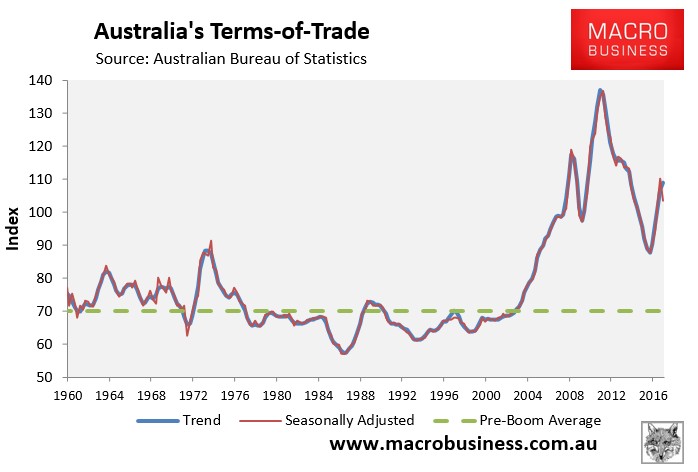
The seasonally-adjusted fall in the terms-of-trade detracted from national income growth, with real NDI falling 1.0% over the quarter but rising by 4.0% over the year.
However, after population growth, per capita NDI fell by 1.4% over the quarter but rose by 2.3% over the year.
In trend terms, since December 2011, per capita NDI has fallen by 0.7% versus 5.2% growth in real per capita GDP:
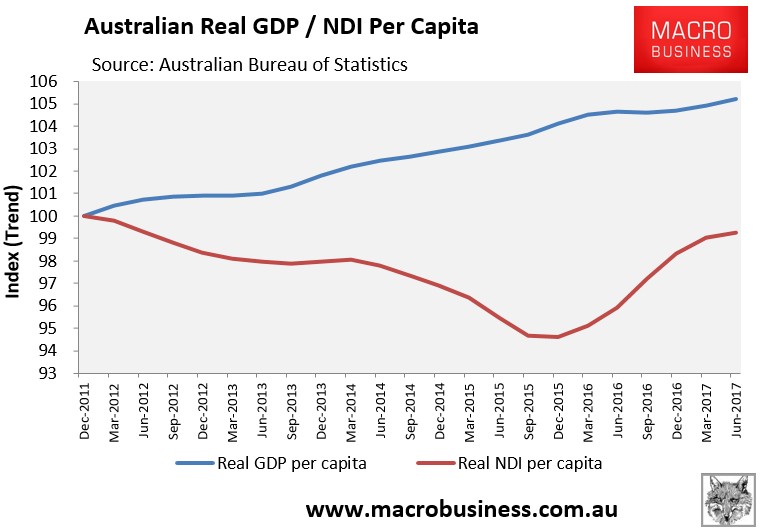
Moreover, despite the recent rebound in per capita NDI, the average compensation of employees remains in the gutter. It was dead flat (0.0% growth) in the June quarter and fell by 0.2% over the year to June 2017 – the lowest annual growth recorded in the series’ history:
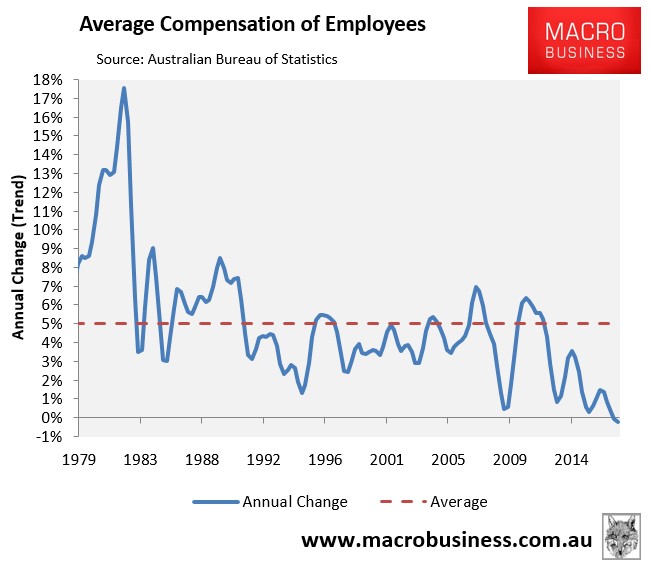
Adjusting for inflation, the situation facing Australian workers is even worse. Hence, they are not sharing in the national income gains.
The latest fall in the terms-of-trade and NDI also helped suppress nominal GDP, falling by 0.1% over the quarter but rising by 6.3% over the year:
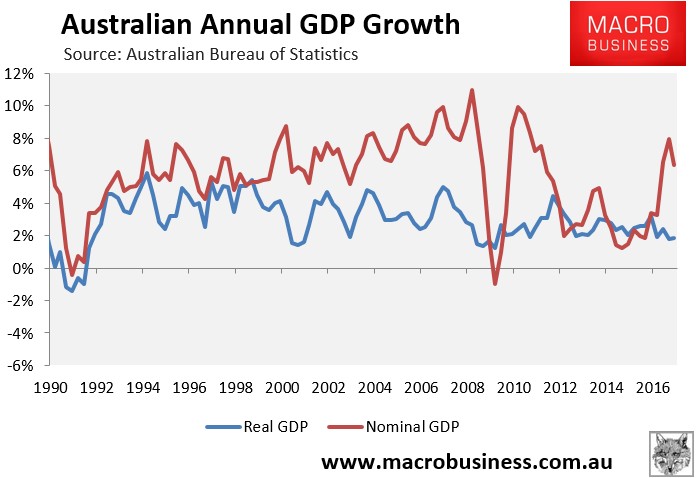
Still, the below chart shows how nominal GDP is now tracking above the average since 1990, which should make life easier for Government finances, at least in the short-term:
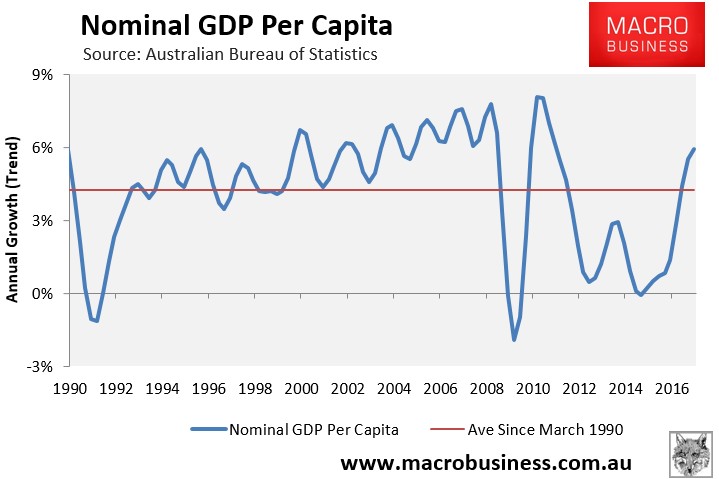
Real GDP per hour worked fell by 0.3% in the June quarter and was down by 0.5% over the year, suggesting falling labour productivity:
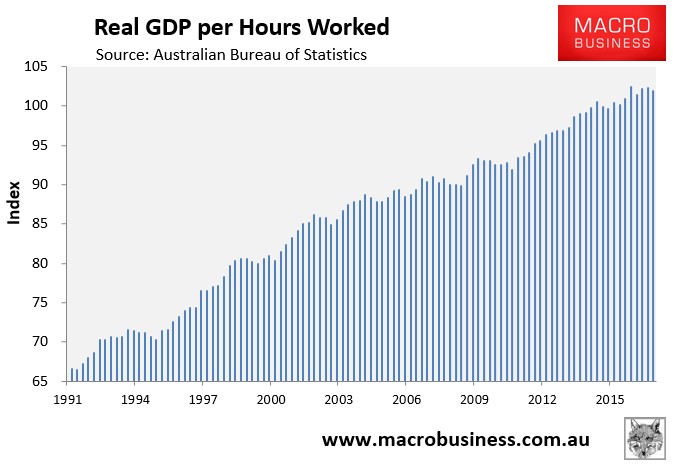
Meanwhile, the household savings ratio crashed another 0.7% to 4.6% – the lowest reading in the post-GFC era:
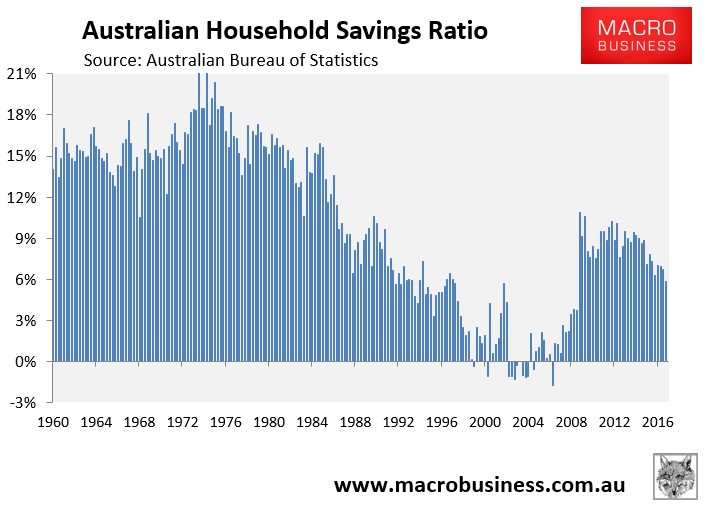
While the headline GDP result was solid, there’s a lot to be worried about in this release.
First, Australian workers are not sharing in the national income gains, with the average dollar compensation of employees falling in the year to June, and even further when adjusting for inflation.
Second, with wages and salaries going backwards, households are running down their savings, as evidenced by the continued expansion of household debt and the erosion of the household savings rate to its lowest level in the post-GFC period. This is clearly an unsustainable support to household consumption.
Third, the main drivers of growth, aside from debt-fueled household consumption, was government spending and net exports. The first requires increased asset sales and debt, whereas the latter provides minimal benefit to the resident population, since our mining companies are predominantly foreign-owned and the bounty is not being shared with workers.
Finally, Australia’s 10-year annualised growth in per capita GDP continues to fall and is now tracking at its lowest level on record – i.e. even worse than the 1980s and early-1990s recessions:
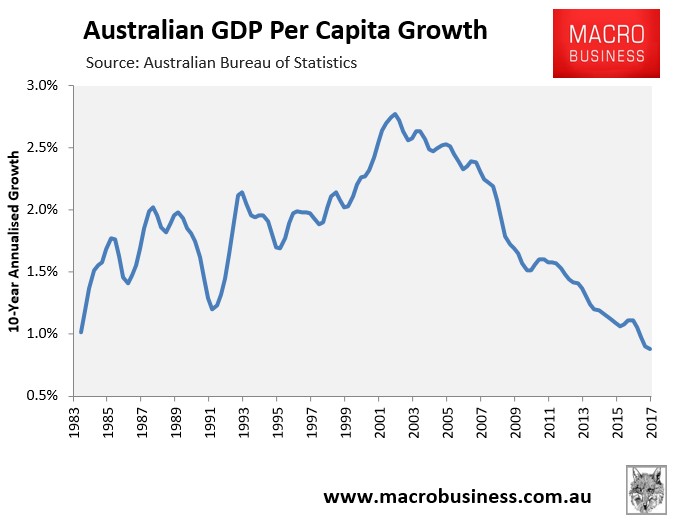
This is the Botox Boom in action. The aggregate economy continues to grow via force-feeding mass immigration and government spending into our broken economic structure.
But if everyone’s share of the economic pie is not increasing sufficiently, wages are going backwards, and living standards in the big cities are being crush-loaded, what is the point?

